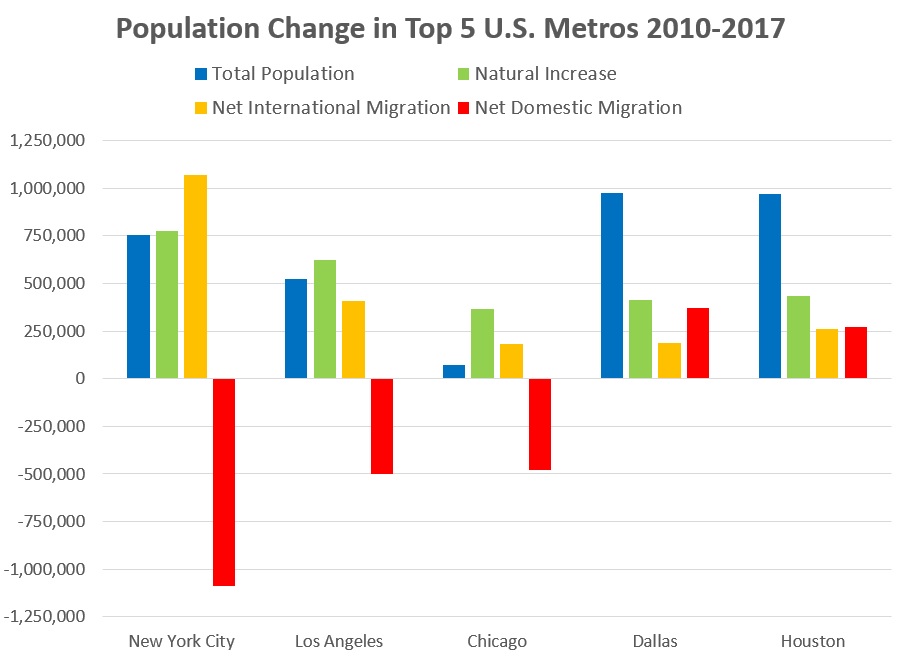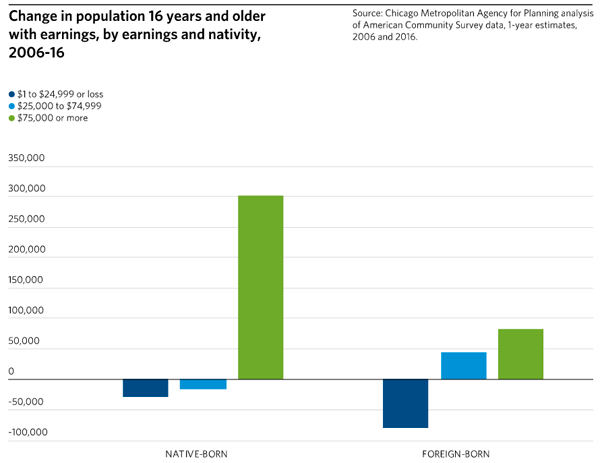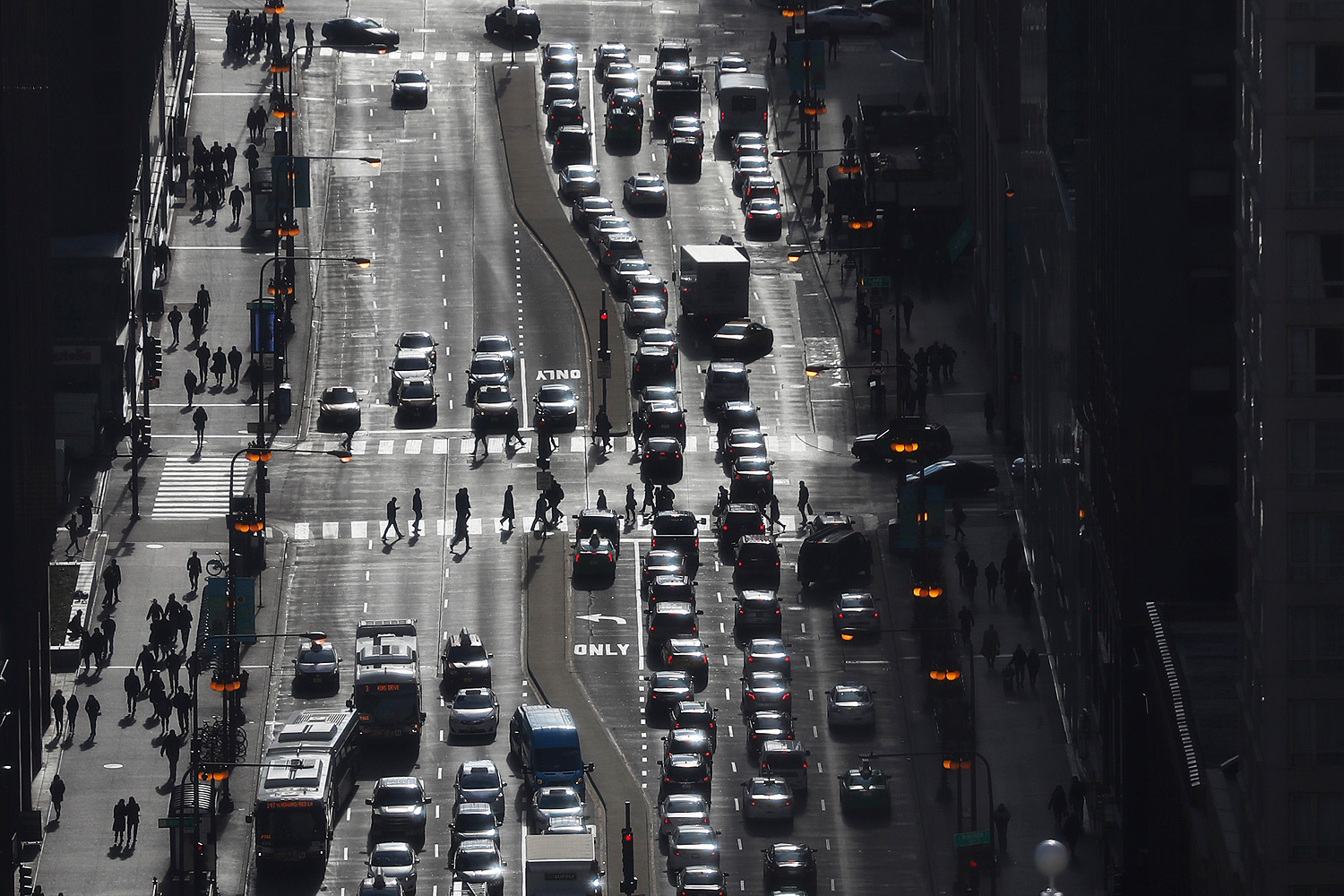The latest numbers on Chicagoland's population are out from the Census Bureau, and as has often been the case in recent years, they're not good: it was the only one of the top-ten metro areas to lose population from 2016 to 2017, and one of only ten out of the top 100 to lose population.
But since then, a couple of the city's keen observers of local demographic trends have broken down the problem. Today Alden Loury of the Metropolitan Planning Council looked at the slightly longer trends and unearthed a useful detail.

The New York City metro area is about twice as big as the Chicago metro area, and it's lost about twice as many people through domestic migration over the same timeframe. The Los Angeles metro is somewhat bigger than Chicago's (about 13.5 million versus about 9.5 million), and it's had an almost identical domestic out-migration.
(In another graph, he did find some less-bad bad news: Chicago's net domestic migration is not as bad as it was in the most recent Census count, after going from -50,000 in 2012-2013 to -90,000 in 2015-2016.)
But both cities have a higher natural increase from births—the Chicago metro is comparatively old—and much greater international migration. So they've grown by a respectable amount this decade, while Chicago has just barely added population. The Sun Belt cities of Dallas and Houston, meanwhile, have had respectable growth in all three, which adds up.
And it's likely that Chicago's bad domestic out-migration and poor growth from immigration share one culprit: a central city that's become friendly to high-earners and unfriendly to the poor and middle class.
That's where another striking chart comes in from the Chicago Metropolitan Agency for Planning, which measures an even longer period.

The metro grew from about 9.1 million to 9.5 million from 2000 to now. And CMAP's analysis suggests that most, if not literally all, came from relatively high earners.
Why? The Atlantic's excellent Alana Semuels just took a very deep dive on this today in her piece "Chicago's Awful Divide," borrowing a line from Andrew Diamond: Chicago is "a combination of Manhattan smashed against Detroit." Semuels focuses on the decline of Chicago's black population and its socioeconomic causes, but it's reasonable to think that a decline in middle-class and working-class jobs makes the city a less appealing destination for immigration, which limited the city's bleeding population for decades.
Right now the big fish that the city's trying to land is Amazon, for whom it put on a really big show this month. It'd be a lot of jobs, which would pay a lot of taxes, which might open up new opportunities to address the divide. But in a lot of ways, it'd be more of the same.



